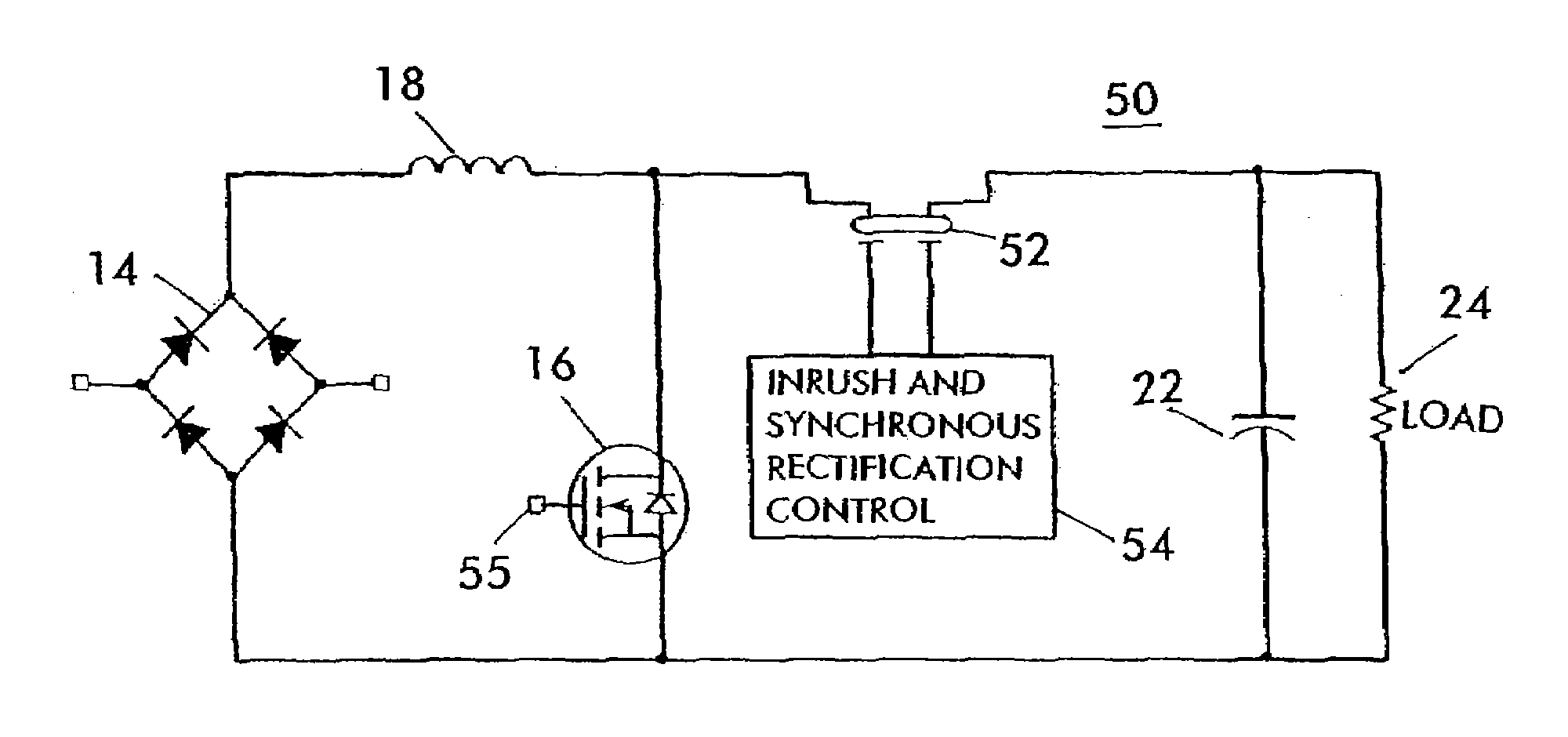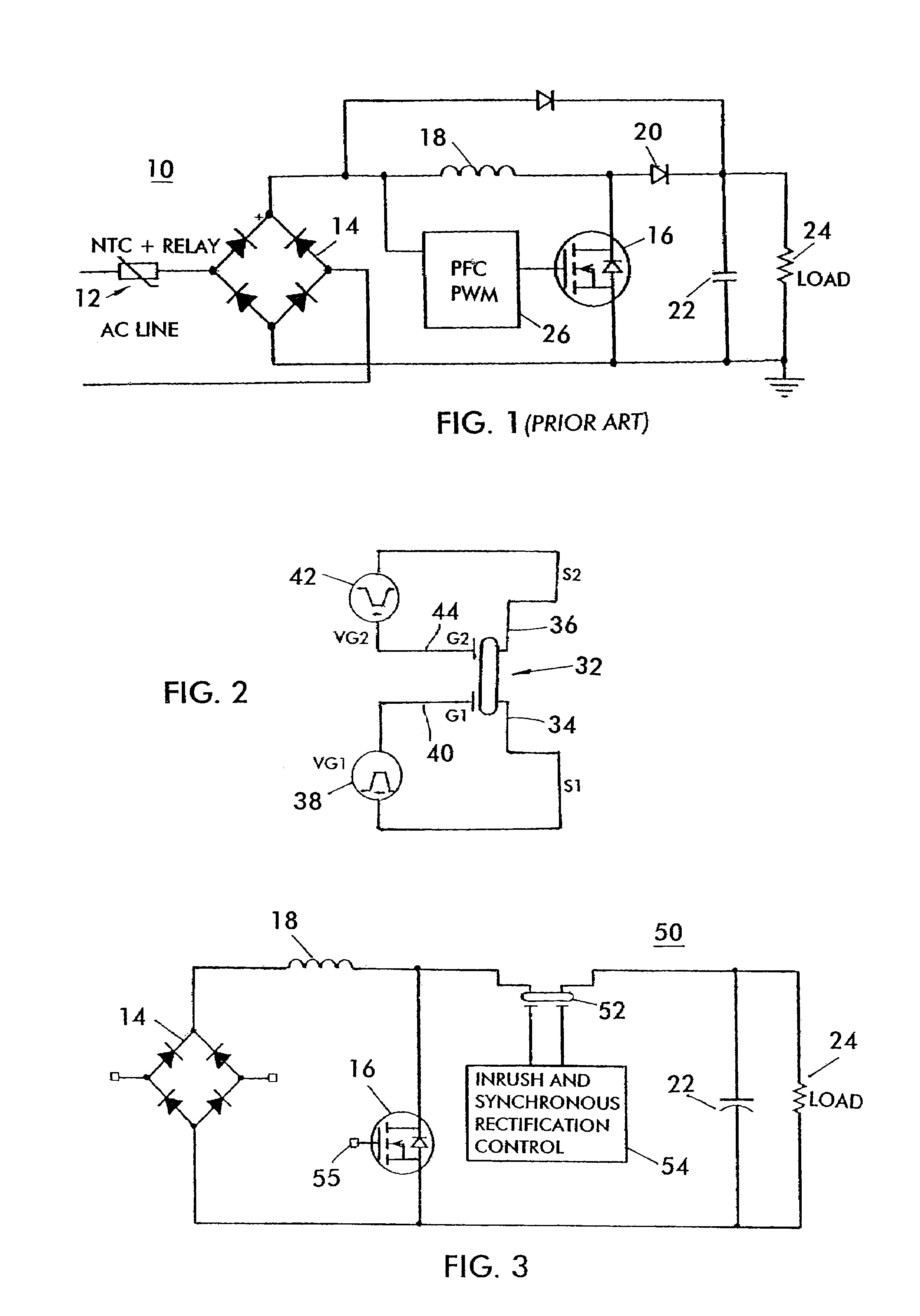Efficient in-rush current limiting circuit with dual gated bidirectional hemts
a technology of inrush current limiting circuit and gated bidirectional hemt, which is applied in the direction of electric variable regulation, process and machine control, instruments, etc., can solve the problems of high reverse recovery loss, control of inrush current at startup, and limit the maximum switching frequency, so as to achieve economic and convenient implementation, improve the effect of conventional practice and functional improvemen
- Summary
- Abstract
- Description
- Claims
- Application Information
AI Technical Summary
Benefits of technology
Problems solved by technology
Method used
Image
Examples
Embodiment Construction
[0029]Referring now to FIG. 3, the basic concept of a synchronous boost converter, generally designated at 50, has the same general architecture as the conventional circuit of FIG. 1 with a diode rectifier bridge 14, a low side MOSFET 16, a boost choke 18 and an output capacitor 22, to which a load circuit 24 is connected in parallel. The boost diode of FIG. 1, however, is replaced by a bidirectional normally on switch 52 of the type described above, and illustrated in FIG. 2. Inrush and synchronous rectification control is provided by a logic unit 54, which may be of any suitable or desired type, or as described in the exemplary embodiments described below, generates the appropriate control signals for switch 52. MOSFET 16 is driven in conventional fashion by suitable pulse width modulation logic (not shown).
[0030]A preferred exemplary, but non-limiting implementation employs a Schottky diode 58 connected between the line side gate and source terminals 60 and 62 of bidirectional sw...
PUM
 Login to View More
Login to View More Abstract
Description
Claims
Application Information
 Login to View More
Login to View More - R&D
- Intellectual Property
- Life Sciences
- Materials
- Tech Scout
- Unparalleled Data Quality
- Higher Quality Content
- 60% Fewer Hallucinations
Browse by: Latest US Patents, China's latest patents, Technical Efficacy Thesaurus, Application Domain, Technology Topic, Popular Technical Reports.
© 2025 PatSnap. All rights reserved.Legal|Privacy policy|Modern Slavery Act Transparency Statement|Sitemap|About US| Contact US: help@patsnap.com



